Generational Farming

Horse drawn carts and men with pitchforks bring feed hay, and take away dirty straw bedding.

Feeding livestock, using tractors to pull trailers instead of horses.

Cutting wheat into bushels - before combine harvesters were invented - on the hill overlooking the farm.

Thrashing the wheat to separate the straw from the grain, a labour intensive job.

Harvesting wheat with an early combine harvester, which threshes the wheat as it cuts the straw.

Collecting the sacks of wheat as the straw dries in the sun.

My Grandfather driving the combine harvester.

Baling the wheat straw to use as bedding for the cattle and dairy herd.

Hand stacking the straw bales for storage and use over the winter.

Looking at cattle, the farm house and farm yard. Note how large the straw stack is from the last photo!

Baling dried grass (hay) into bales for feeding cattle and horses.
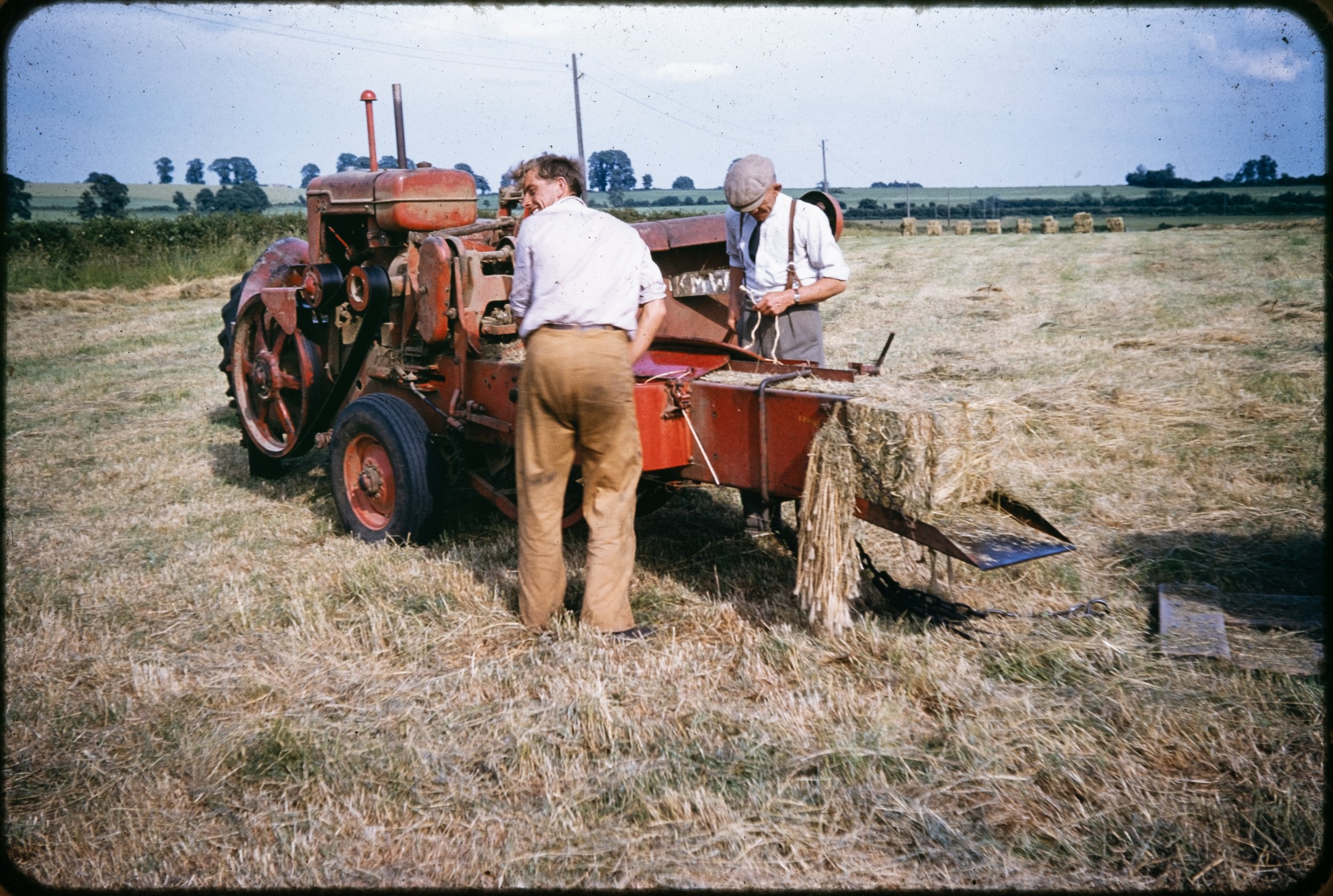
My Grandfather fixing the hay baler, a mechanical mind is always important on the farm.

Having a laugh whilst trying to escape the heat from hand stacking the hay bales.

Tractor cutting the grass and truck pulling rake to collect the grass before transportation to winter storage.

Storing and preserving summer grass for winter feeding, involves stacking and rolling out the oxygen.
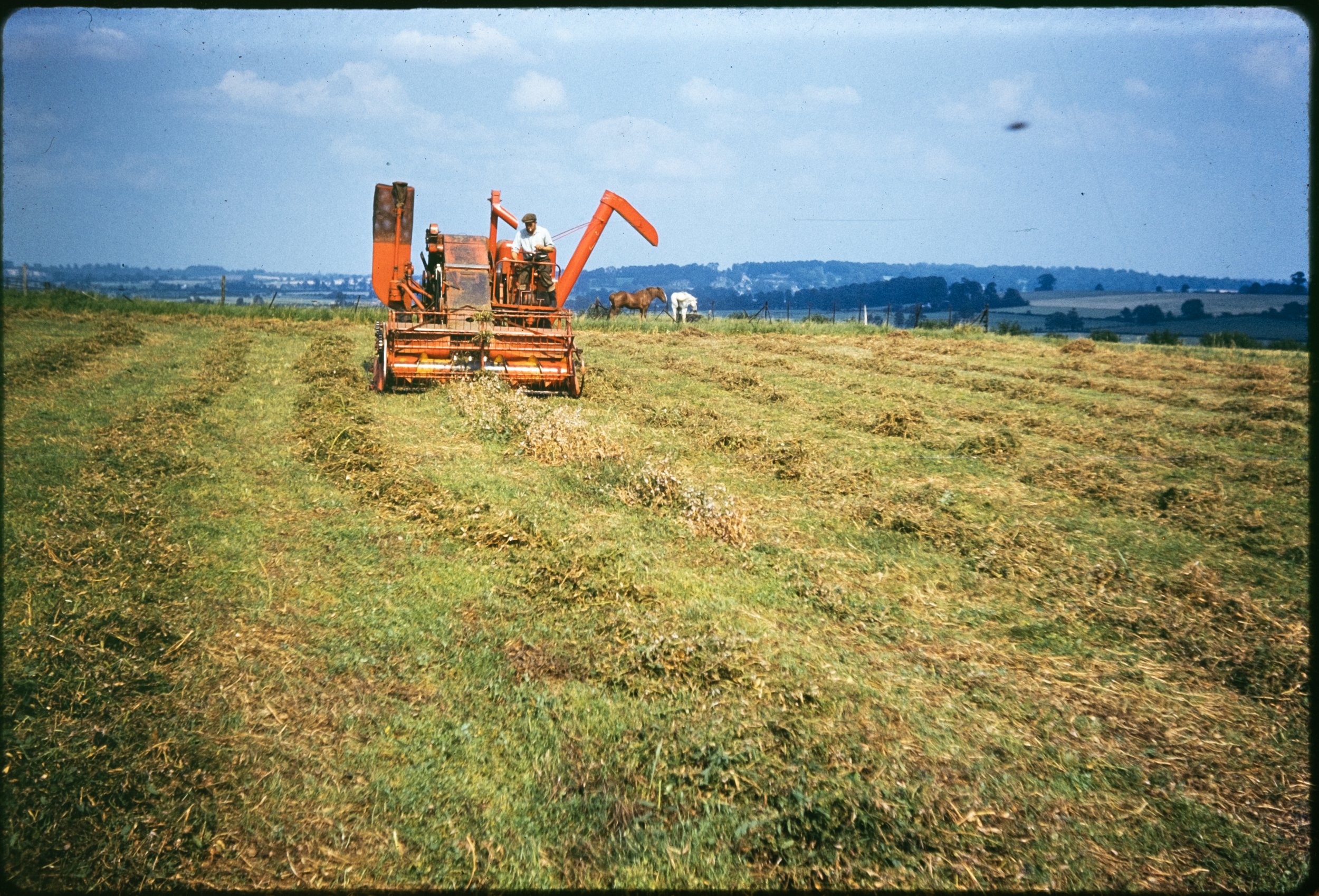
A newer combine harvester that empties the wheat into trailers rather than into sacks.

My Grandfather driving the combine harvester as it empties into a trailer, with my Father as a child infront.


Cultivating the soil ready for planting.

Hand planting potatoes.

Learner driver planting potatoes.

Construction on the cow track.

Feeding the sheep in the winter.
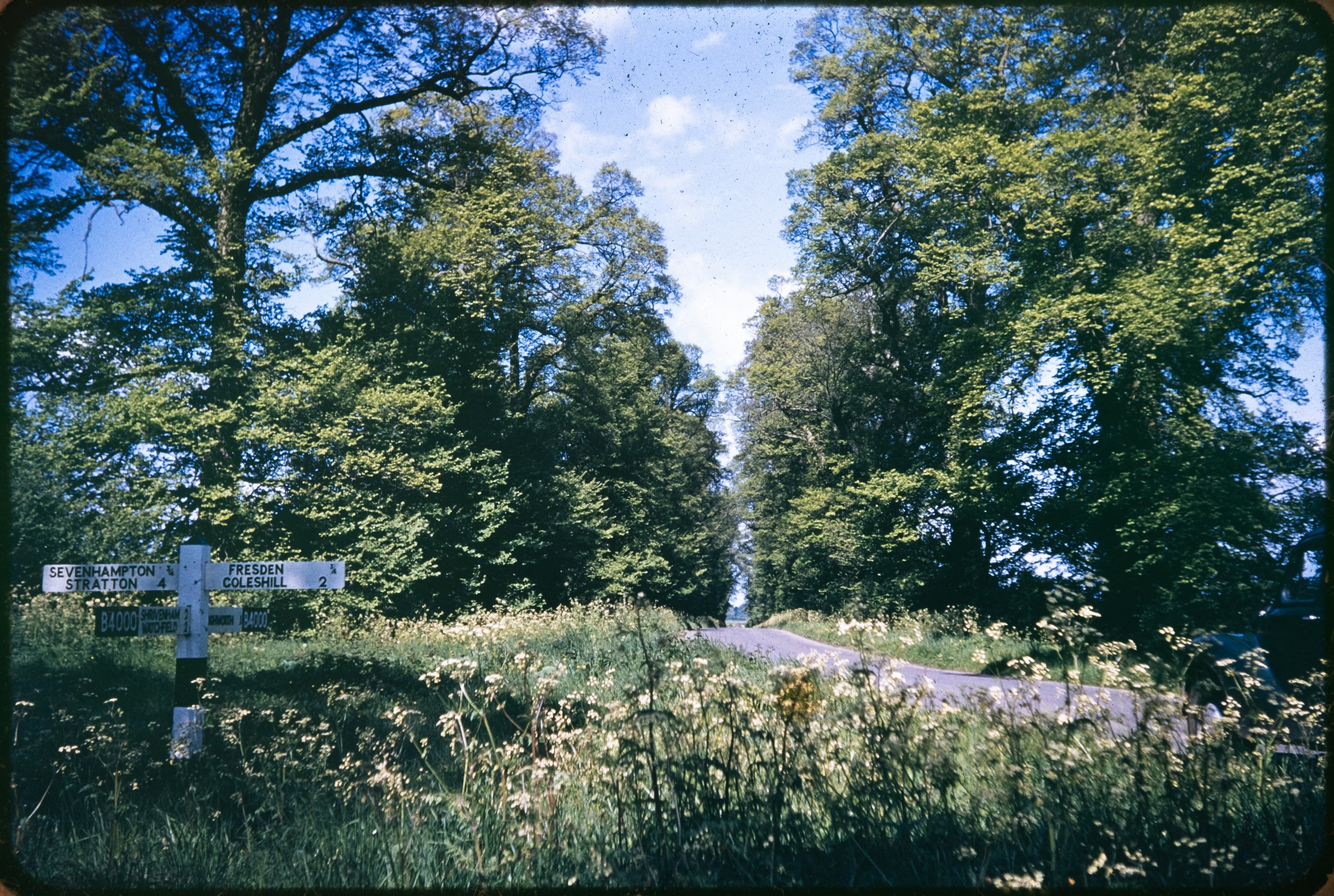
A local country lane in the spring.

A new, larger combine harvester arriving on the farm.

Larger output machines can combine a faster and more efficiently, requiring larger, faster tractors and trailers.

My Father and Grandfather calving a cow together.

Building in progress of the new, larger and more efficient milking parlour.

Larger livestock sheds were built to accommodate larger machinery, and to improve the sanitation of the herd.

A large straw fire lit by vandals destroyed the straw barn, eventually leading to the abandoning of the second farm yard for security reasons.

Upgrading the silage clamp to store more summer grass for feeding a larger herd in the winter.

The increase mechanisation improves speed, efficiency and quality of the silage produced.

My Father driving a loader capable of carrying 8 bales, thus replacing the manpower needed to stack the bales.

The bales are still hand stacked in the barn, this is the team posing after finishing. Having stacked these myself, it is no easy work.

The demolition of old, low ceiling barns to replace with larger barns with better ventilation.

The building of new shed uprights next to the older original.

Precarious welding to replace wooden A-frames with more durable metal framing.

Continually upgrading the sheds and machinery allows for larger herds and greater outputs.

Controlled burning of straw stubble.

Extreme snow drifts during a particularly cold winter required farm equipment to clear roads for the milk tanker.

Summer grass harvest for winter feed.

The newest milking parlour, doubled the amount of cows being milked to 16.
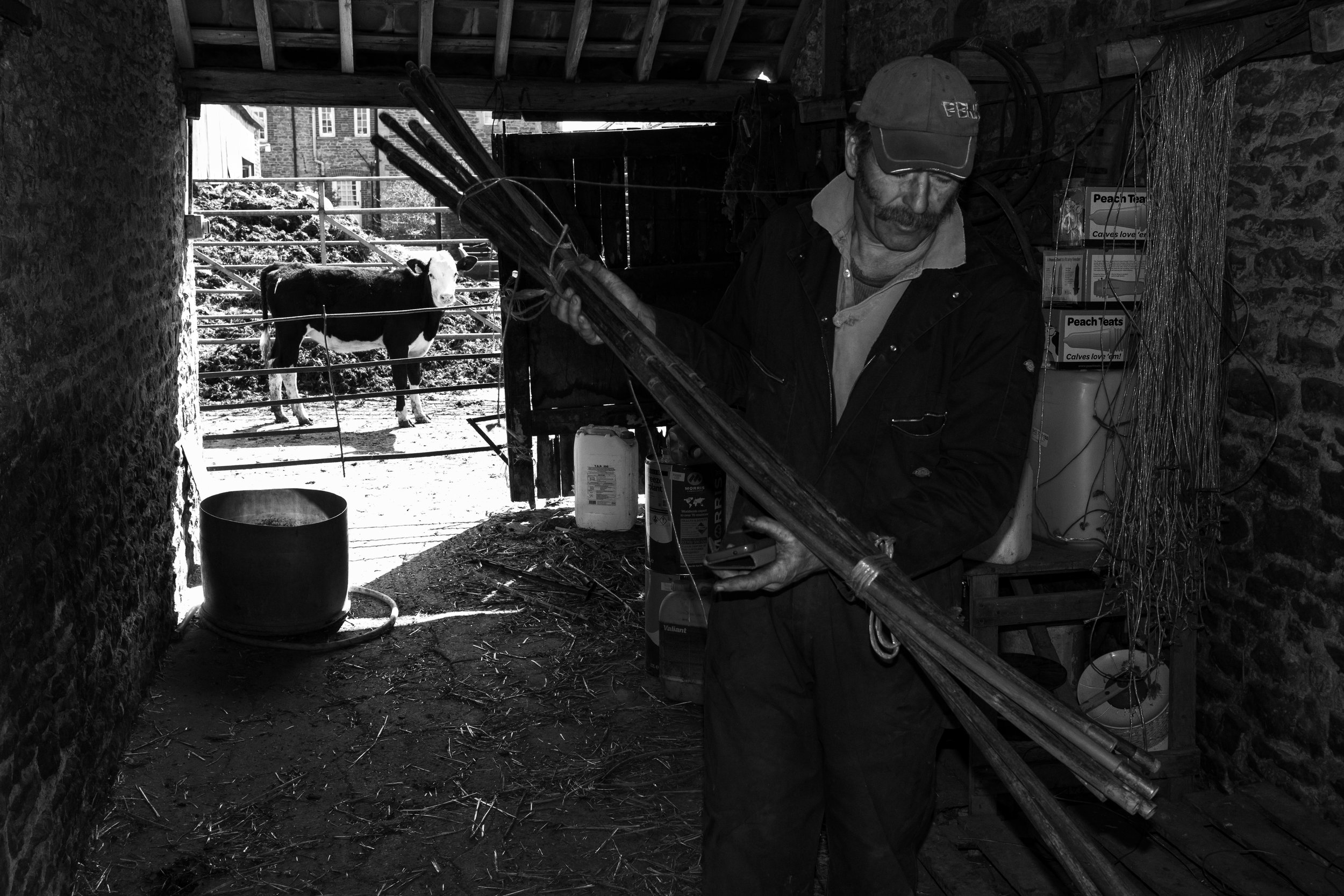
My father, grabbing drainage supplies to fix blocked drains.

My father and Ralph, the resident mechanic, welding up a modification on the excavator.

A cow chewing the cud behind a gate.

Adding milled barley into the winter grass storage to increase the feed value.

Fixing a machine breakage is often a team effort, especially during harvest time.

The farm buildings with some particularly interesting cloud formation.

Loading cattle for transport from their winter barn to summer pastures.

Charging the battery on the oldest tractor on the farm, a relic from my fathers early years.

Deciding on which fields to graze the cows on after milking.



Fixing the hedge trimmer in the farm workshop - filled with tools and parts for any piece of machinery.

The conversion of old barns into housing at the decommissioned 2nd farm yard.
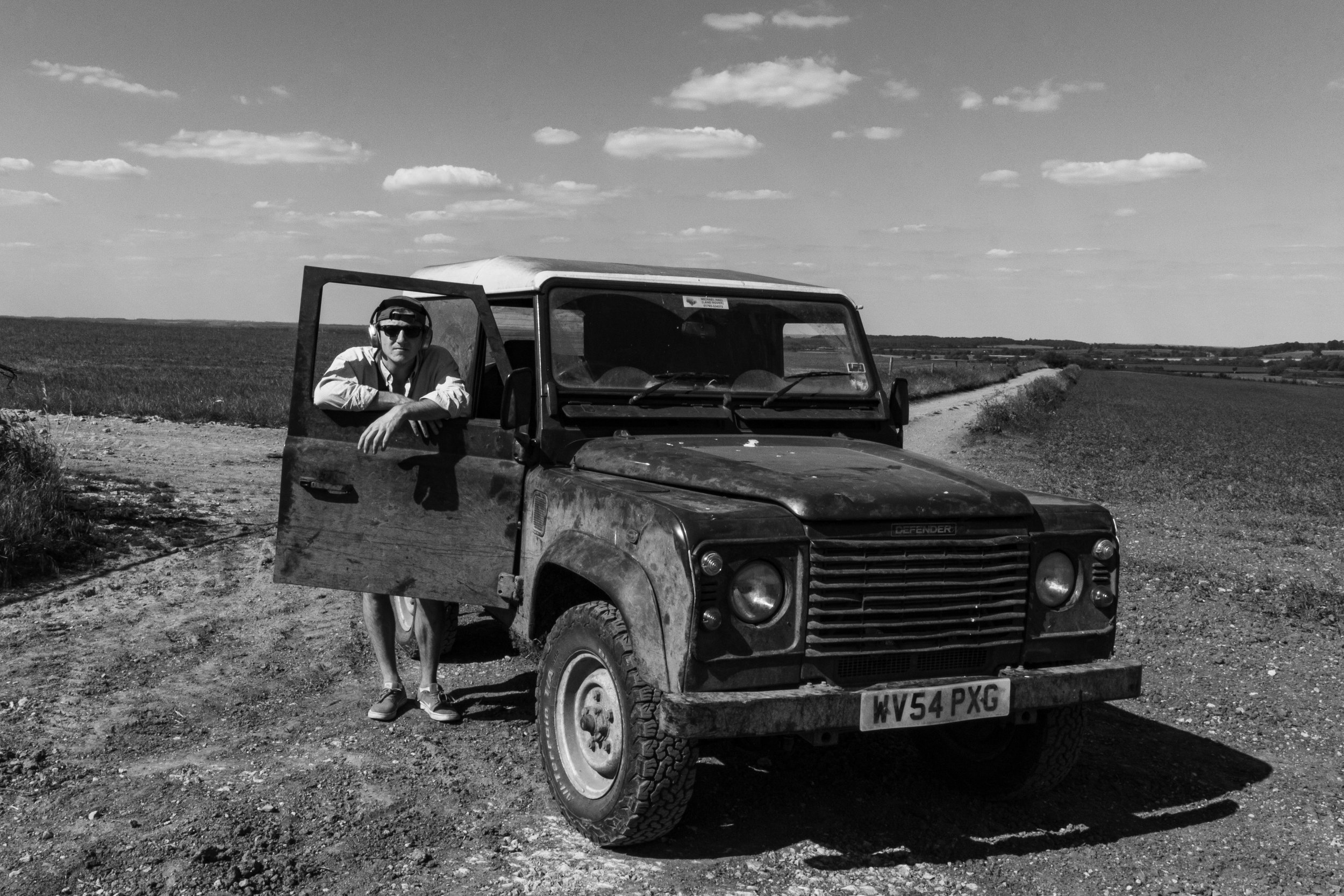
The farm land rover and the farmers son.

Curious cows enjoying a spectacle.
This project is a generational documentary collaboration, between my Grandparents, my Parents and myself. Collating thousands of slide film photographs taken from the 1950s onwards.
This selection of photos were taken by my Grandfather and Grandmother. They show the farm transitioning from horse drawn carts to tractors and trailers, from threshing bushels of wheat - an extremely labour intensive job - to using combine harvesters which cut, threshed and separated the wheat grain from straw in one piece of machinery.
Many jobs still required a large workforce but new farming inventions radically improved the efficiency of and the yield of the farm. The mechanisation of farming was pushed by the need to feed ever-growing populations.
These images are a powerful reminder of what went into creating the food we eat. I have worked on the farm my whole life, but have been fortunate enough to sit in air condition tractors and telehandlers, rarely having to wield a spade or pitchfork.
This selection of photos were taken as my Father took over from my Grandfather, as the farm went through a rapid increase in mechanisation and development. With larger, more efficient tractors and implements enabling more land to be worked in shorter time periods, easing the stress of weather dependent jobs. The increased mechanisation also meant fewer labour intensive jobs and therefore fewer farm workers.
My father demolished most of the small, wood and stone barns and replaced them with larger, steel and concrete sheds that can accommodate the larger herd and larger farm machinery. The larger barns provide better ventilation and sanitation, leading to an overall healthier herd.
These images show the development and change in approach of farming practices. It was during my fathers time in charge that the farm changed from a conventional farm (using herbicides and pesticides, commonly used to increase the yield of a farm) to an organic farm, employing sustainable farming practices to improve the soil health and biodiversity of surrounding land.
As my father retires, the farm enters a new era. An era where his sons have found their own paths away from farming and for the first time in 5 generations the farm is changing hands.
These images are from my time on the farm, combining my passion for photography and documenting my home, my heritage and the hard work of the people that make farming a feasible lifestyle.
Coming from an organic farming family, focused on producing high-quality local produce, I understand the importance of environmental stewardship and the beneficial impacts good practices have on our environment. I have found direction and meaning through the photographic farming history of my family, which documented the heritage and evolving farm practices commonly overlooked to produce the food we eat.
I hope to reveal my family's journey in a future exhibition that unveils the hidden figures and the work that produces the food we eat, the importance of food security and sustainable farm practices.